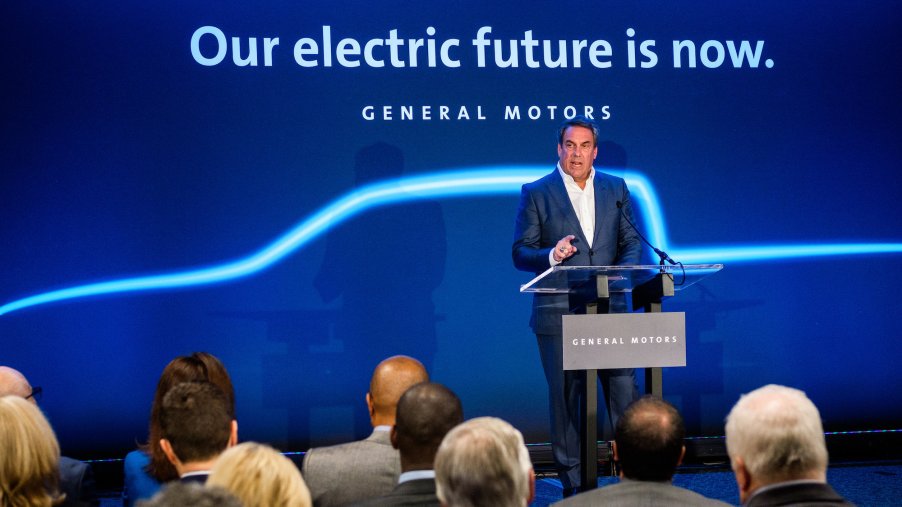
Is GM’s Plan to Go Electric by 2035 Just a Pipe Dream?
GM recently announced it hopes to go electric by 2035. The news came toward the end of January and quickly made headlines globally. While many media reports have generally praised General Motors for aspiring to produce zero-emissions trucks, we have to wonder about the automaker’s word choice.
There’s a significant difference between aspiring to do something and committing to do it. Aspiration is something one hopes to achieve, while a commitment means doing everything in one’s power and capacity to accomplish it.
Nevertheless, there’s a lot more to this story than a choice in wording. GM had displayed a century-long unwillingness to innovate, even when innovation was more than possible. And in some cases, the innovations were already there, but General Motors’ leaders seemed more interested in profits. Despite wanting to sound inspiring, GM’s message came off as a corporate strategy.
First things first: EVs were viable before we could fly
Electric cars are far from new and innovative. Before gasoline, electric power made the most sense. If you’ve ever seen an old photo of a steam-powered car, you would understand why. Plus, there was that 45-minute wait for the steam engine to warm up.
According to ABC News, “The Electric Vehicle Company, doomed to become a victim of its own business malpractice, was partly responsible for the demise of the product it was named for. Founded in the final years of the 19th century, it rose to prominence with its Electrobats, considered the first truly useful electric car for day-to-day transportation. The company pioneered a taxi system of leased vehicles that used service stations for quick battery changes and repair work.”
And historian David Kirsch told ABC: “If you’d asked the great experts of their age in 1900 which technology would come to dominate the motor-based transportation, I think most learned people would have said electricity.”
It would’ve taken over 100 years, but they would’ve been proven right eventually.
GM builds cars to make money, not be a leader
Most experts on the subject believe the oil industry has always blatantly stood in the way of vehicle innovation. It has done so since the beginning. Nonetheless, automakers haven’t merely remained unwilling participants. Faced with market saturation and technological stagnation throughout the 1920s and 1930s, General Motors CEO Alfred P. Sloan Jr. introduced the first instance of planned obsolescence.
Instead of improving technology, Sloan’s vehicles prioritized styling and gadgets — the origins of trim models, annual cosmetic changes, and significant triennial model additions. Sloan’s objective was to cause consumers to feel dissatisfied with what they drove once they saw newer, shinier models. This was promoted by model trade-ins coupled with up-selling buyers to pricier models. It didn’t matter to GM whether the car was still of useful value.
History notes that “Sloan’s philosophy was that ‘the primary object of the corporation … was to make money, not just to make motorcars.’ He believed that it was necessary only that GM’s cars be ‘equal in design to the best of our competitors … It was not necessary to lead in design or to run the risk of untried experiments.'”
Thus, a new corporate model — Sloanism — replaced Fordism and remains corporations’ predominant policy. “Although automobile sales collapsed during the Great Depression, Sloan could boast of GM that ‘in no year did the corporation fail to earn a profit,'” the article continued.
This is likely why General Motors has been stubborn and slow to eliminate tailpipe emissions though it could have begun well over a decade ago.
The media headlines might’ve been too generous to GM
General Motors‘ recent press briefing announcing it “aspires to eliminate tailpipe emissions from new light-duty vehicles by 2035” had GM fans abuzz with praise. But is aspiring to zero emissions enough after profiting untold billions? Or does this announcement have something to do with major developments like California and other states upping future emissions standards to include zero-emission trucks?
It could be that many startups founded on innovating and building all-electric vehicles such as semi-trucks are either owned or backed by foreign companies. Either way, GM Chairman and CEO Mary Barra said GM plans to achieve carbon neutrality in several ways: investing in electrification, taking a science-based approach, investing in renewable energy, investing in carbon credits or offsets, and improving supply chain and infrastructure.
Technology firms such as the Los Angeles-based Chanje already supply companies with fleets of all-electric medium-duty trucks and vans. The China-based BYD builds terminal tractors and long-range battery-electric Class 8-Day Cabs with a 125-mile range. Germany-based Daimler Trucks has gone all out and produces the all-electric 18-wheel Freightliner eCascadia. There’s also the Phoenix-based Nikola Motors, which manufactures fully electric and hydrogen-fueled long-haul semi-trucks.
The winds of change have been blowing past GM for decades. Now that those winds have turned into hurricane-force gales, the automaker is finally ready to join the others. But many tech/auto companies are practically lightyears ahead of GM, and GM knows this. After all, Sloan made it clear it’s not in business to lead or risk untried experiments. That’s what Elon Musk’s Tesla does.


